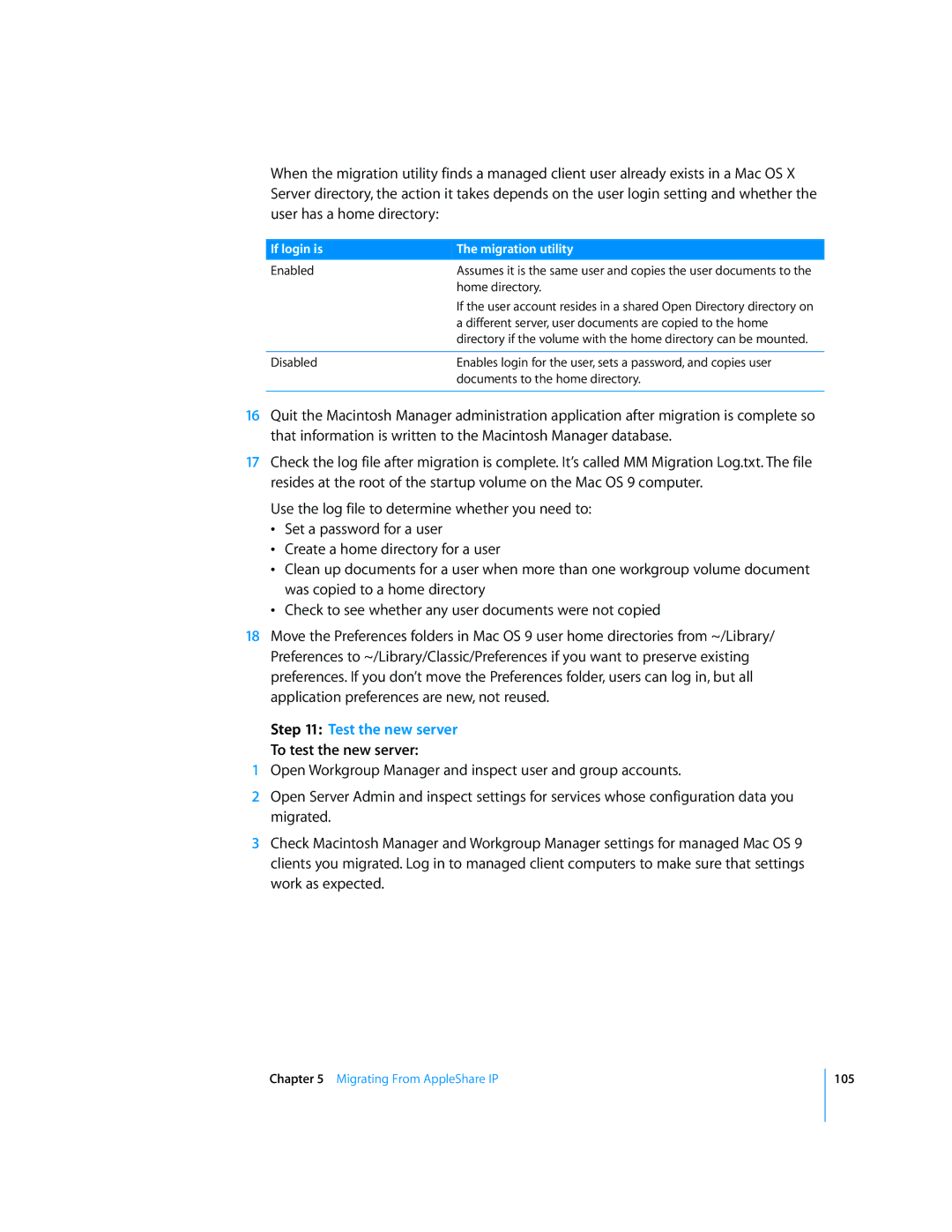When the migration utility finds a managed client user already exists in a Mac OS X Server directory, the action it takes depends on the user login setting and whether the user has a home directory:
If login is | The migration utility |
Enabled | Assumes it is the same user and copies the user documents to the |
| home directory. |
| If the user account resides in a shared Open Directory directory on |
| a different server, user documents are copied to the home |
| directory if the volume with the home directory can be mounted. |
|
|
Disabled | Enables login for the user, sets a password, and copies user |
| documents to the home directory. |
|
|
16Quit the Macintosh Manager administration application after migration is complete so that information is written to the Macintosh Manager database.
17Check the log file after migration is complete. It’s called MM Migration Log.txt. The file resides at the root of the startup volume on the Mac OS 9 computer.
Use the log file to determine whether you need to:
•Set a password for a user
•Create a home directory for a user
•Clean up documents for a user when more than one workgroup volume document was copied to a home directory
•Check to see whether any user documents were not copied
18Move the Preferences folders in Mac OS 9 user home directories from ~/Library/ Preferences to ~/Library/Classic/Preferences if you want to preserve existing preferences. If you don’t move the Preferences folder, users can log in, but all application preferences are new, not reused.
Step 11: Test the new server
To test the new server:
1Open Workgroup Manager and inspect user and group accounts.
2Open Server Admin and inspect settings for services whose configuration data you migrated.
3Check Macintosh Manager and Workgroup Manager settings for managed Mac OS 9 clients you migrated. Log in to managed client computers to make sure that settings work as expected.
